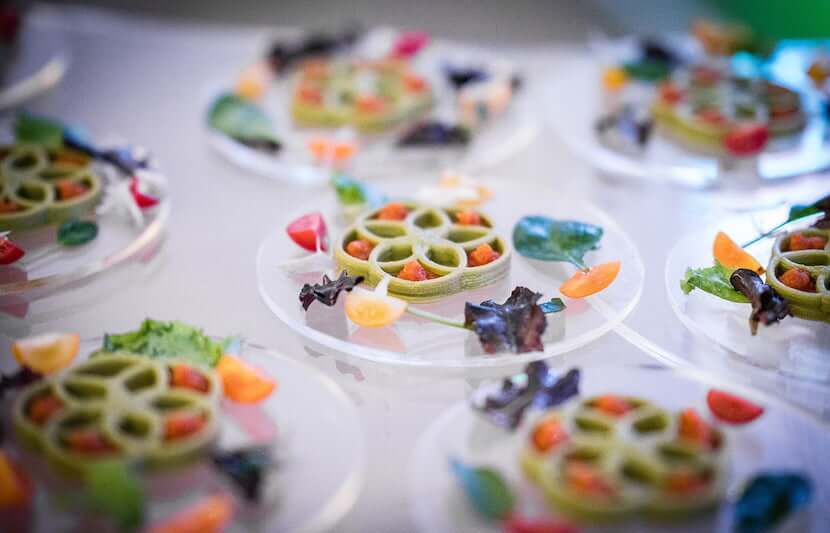Yissum Research Development Company, a technology transfer company of the Hebrew University of Jerusalem, has developed a novel 3D printing technology that makes it possible to print tasty and healthy meals tailored to personal taste and/or health needs.
Personalization is made possible with the technology’s use of cellulose nano-crystals (CNC), a type of calorie-free, edible fiber.
The properties of CNC include self assembly to enable the binding of different food components such as proteins, carbohydrates and fats. This allows CNC to form stiff materials at low water content and gel-like materials at high water content.
CNC stabilizes oil droplets in water and can also interact with proteins, which enables itself to form a base for different textural elements. The base can then be infused with nutrients at the desired amount to create a tasty meal with special textures.
Additionally, users are given the option to bake, cook, fry or grill while printing the food.
Since the technology allows users to personalize their own food by using a low-calorie base, the resulting product is a quick, healthy meal that can be eaten right away.
The technology was developed by Oded Shoseyov, a professor at the university’s Robert H. Smith Institute of Plant Sciences and Genetics in Agriculture, and Ido Braslavsky, an associate professor at the university’s Institute of Biochemistry, Food Science and Nutrition.
The researchers aim for the technology to serve a variety of markets and populations, including the gluten-free market, meat substitutes, the vegetarian and vegan markets, low-calorie diets, diets for people with diabetes, diets for athletes and more.
“The ability to automatically prepare, mix, form and cook personalized food in one device, is a truly revolutionary concept,” Yaron Daniely, president and CEO of Yassim, said in a statement.
“This has the potential to address a variety of challenges facing the field of nutrition, from the demand for personalized food for people with diseases such as celiac or diabetes, personal nutritional habits such as vegetarians, to addressing the problem of lack of food in developing countries.”
While the printing process itself is still under development, the researchers are targeting a process in which a single portion could be printed in 30 minutes using a single printing head. The printing process would be faster with the use of a multi-head printer.
“The future kitchen will include 3D printers that will tap on the digital revolution to deliver healthy and convenient preparation of food,” said Braslavsky.
“Our technology offers the use of a low-calorie, natural base as a matrix for printed food.”



